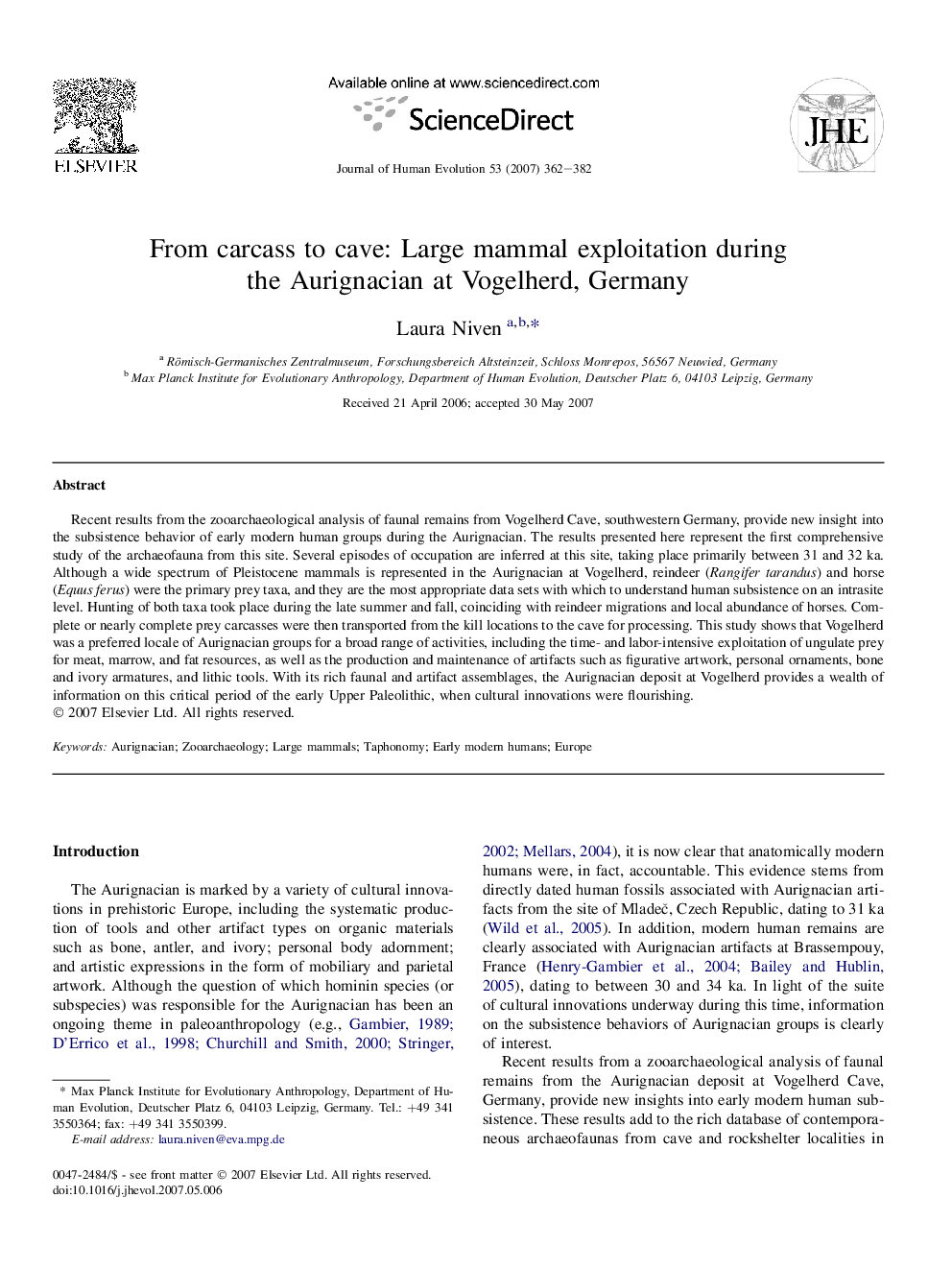| Article ID | Journal | Published Year | Pages | File Type |
|---|---|---|---|---|
| 4557260 | Journal of Human Evolution | 2007 | 21 Pages |
Recent results from the zooarchaeological analysis of faunal remains from Vogelherd Cave, southwestern Germany, provide new insight into the subsistence behavior of early modern human groups during the Aurignacian. The results presented here represent the first comprehensive study of the archaeofauna from this site. Several episodes of occupation are inferred at this site, taking place primarily between 31 and 32 ka. Although a wide spectrum of Pleistocene mammals is represented in the Aurignacian at Vogelherd, reindeer (Rangifer tarandus) and horse (Equus ferus) were the primary prey taxa, and they are the most appropriate data sets with which to understand human subsistence on an intrasite level. Hunting of both taxa took place during the late summer and fall, coinciding with reindeer migrations and local abundance of horses. Complete or nearly complete prey carcasses were then transported from the kill locations to the cave for processing. This study shows that Vogelherd was a preferred locale of Aurignacian groups for a broad range of activities, including the time- and labor-intensive exploitation of ungulate prey for meat, marrow, and fat resources, as well as the production and maintenance of artifacts such as figurative artwork, personal ornaments, bone and ivory armatures, and lithic tools. With its rich faunal and artifact assemblages, the Aurignacian deposit at Vogelherd provides a wealth of information on this critical period of the early Upper Paleolithic, when cultural innovations were flourishing.
